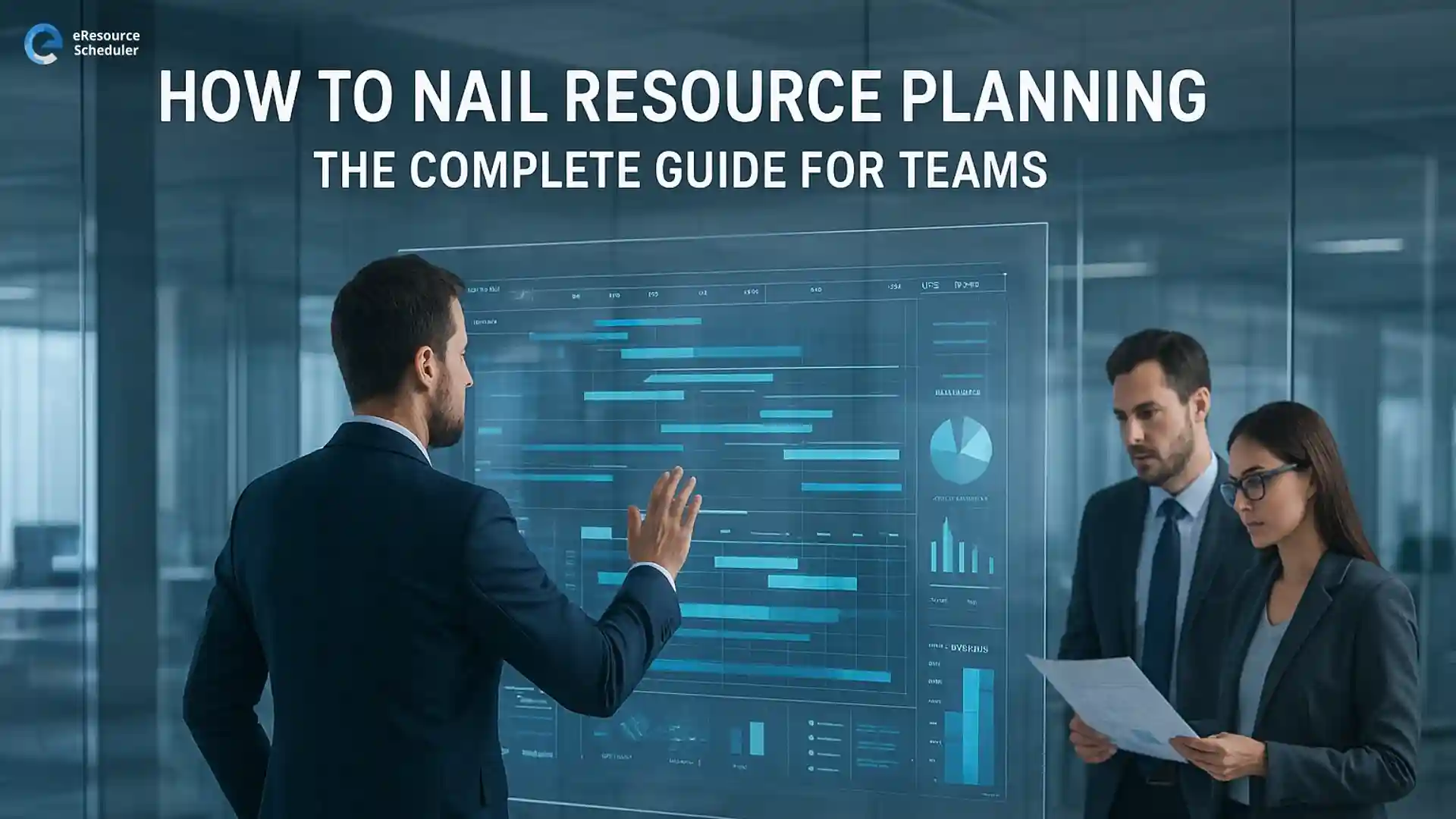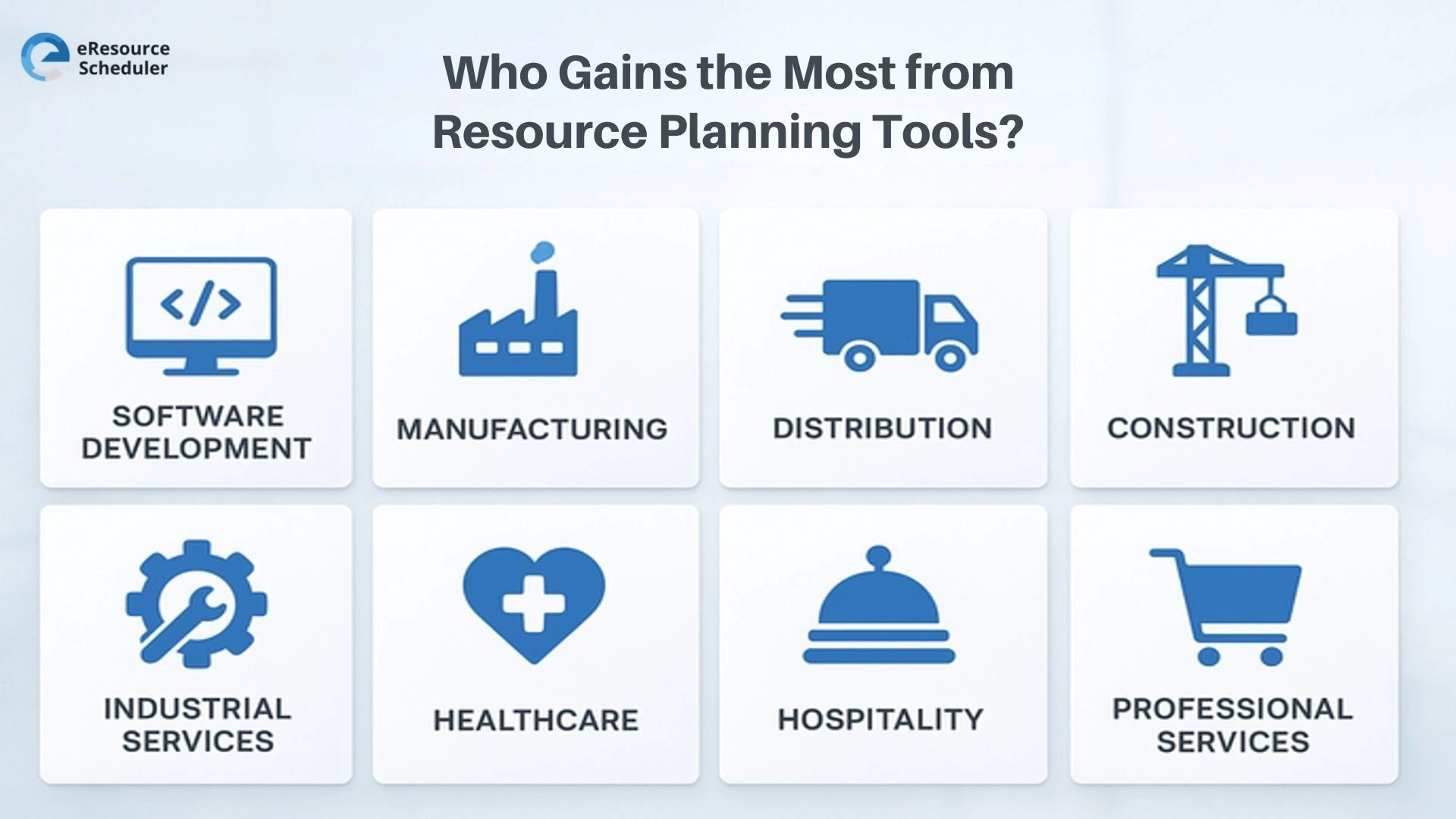
Juggling multiple projects, deadlines, and priorities with just a spreadsheet? That’s a fast track to burnout and bottlenecks. In today’s fast-moving business landscape, success isn’t about having endless resources; it’s about using the ones you already have smarter. That’s where resource planning steps in.
A well-structured resource capacity planning helps teams see who’s available, what’s pending, and where the gaps are before deadlines start breathing down their necks. It bridges strategy with execution, ensuring projects don’t just get done, but get done efficiently.
In this guide, we’ll unpack how resource planning works, why it matters, and how mastering it can turn everyday chaos into well-oiled collaboration and set your team up for consistent, predictable project success.
Before diving into techniques to optimize resource allocation, let’s start with the basics. What exactly is resource planning, and why does it matter so much for project success?
At its core, resource planning is the process of strategically assigning both human and non-human resources to tasks in a way that maximizes productivity and keeps every project on track. In simpler terms, it’s about getting the right people on the right tasks at the right time.
Done right, resource planning boosts on-time delivery rates, maintains work quality, and prevents the classic chaos of overlapping deadlines and uneven workloads. But let’s be honest, it’s far from easy. Matching the right skill sets to dynamic project needs while maintaining balance across teams can be a logistical nightmare without the right system in place.
That’s where resource management tools like eResource Scheduler (eRS) step in. They replace the guesswork with data-driven insights, making it easy to visualize workloads, assign resources efficiently, and forecast upcoming capacity gaps. The result? Higher efficiency, fewer scheduling conflicts, and smoother project delivery, all without stretching your team too thin.
Because when resource planning works, projects don’t just run; they flow.
You wouldn’t hit the road without a map, so why start a project without a resource plan? A resource plan is your blueprint for how every human and non-human resource fits into the bigger picture of project delivery. It outlines what’s needed, when, and for how long—so work never hits a dead end.
At its heart, resource planning is about managing your most valuable asset: people. The collective skill, expertise, and experience of your team are what drive projects forward. Planning those human resources thoughtfully determines how efficiently your team delivers—and how happy your clients stay.
A solid resource plan typically follows eight essential steps:
Every great plan starts with clarity. Know your project scope, deliverables, and constraints before assigning a single task. Understanding the client’s goals, timelines, and budget gives your resource plan a realistic foundation.
From developers, designers, and testers to software licenses, laptops, and office space—map out everything your project needs. This holistic view helps avoid last-minute scrambles for missing talent or tools.
Break tasks down and estimate the hours each role requires. This gives you a baseline for scheduling workloads and helps spot potential overutilization or idle time before it happens.
Identify where skill shortages or availability issues might derail progress. Whether it’s training existing staff, hiring contractors, or redistributing workloads, your plan should detail how these gaps will be handled before they cause delays.
This is where planning becomes precision. A detailed resource schedule outlines:
Tools like eResource Scheduler make this seamless by giving managers real-time visibility into who’s working on what, and when.
Align skills with the right tasks and not just by availability, but by capability and interest. Resource planning software simplifies this with a central database of team profiles, making it easy to assign work that fits strengths and timelines.
Tracking doesn’t mean micromanaging. Define clear KPIs or utilization metrics, and monitor progress regularly to ensure the plan stays on course. Adjust where necessary to keep workloads balanced and projects moving smoothly.
Once the project wraps, assess what worked and what didn’t. Analyze utilization reports, gather feedback, and refine your next plan accordingly. Resource planning isn’t static and evolves with every project.
When executed right, a resource plan turns reactive management into proactive control. It minimizes firefighting, maximizes productivity, and ensures every project hits the sweet spot between efficiency and excellence.
Pro tip: Use tools like eResource Scheduler to automate these steps. You’ll save hours of manual tracking, and your team will thank you for it.
Whether you’re coding an app or constructing a building, resource planning is what separates smooth project execution from a scheduling nightmare. It’s the backbone of every business operation—large enterprise or lean startup—because success depends on how efficiently teams use the people and tools they already have.
When resources are over-allocated, productivity drops, and profits are bled through wasted hours. Under-allocation, on the other hand, stalls milestones and stretches deadlines thin. The real challenge lies in balance—making sure every task lands with the right person at the right time. That requires insight into each team member’s skills, experience, and current workload—something spreadsheets rarely get right.
That’s where a resource scheduler proves invaluable. They help managers allocate work intelligently, detect overallocation before it happens, and visualize team capacity in real time. The result? Fewer conflicts, better utilization, and consistently higher project output.

The versatility of platforms like eResource Scheduler makes them indispensable across industries that rely on coordinated effort and time-sensitive deliverables, including:
In short, wherever time, talent, and tasks intersect, resource planning isn’t optional. It’s the edge.
Resource planning isn’t just another management chore; it’s the quiet power move behind every successful project. Teams that plan right don’t scramble; they sync. They don’t react to bottlenecks; they avoid them. And with modern tools like eResource Scheduler, they do it all faster, cleaner, and smarter.
If you’re ready to move beyond spreadsheets and start running projects with clarity and confidence, it’s time to put your plan into action. Book a quick demo of eResource Scheduler and see how effortless resource planning can be when everything and everyone is perfectly aligned.
Book a quick demo of eResource Scheduler and see how effortless resource planning can be when everything and everyone is perfectly aligned.
1. What is resource planning in simple terms?
Resource planning is the process of assigning the right people, tools, and equipment to the right tasks at the right time to ensure smooth project delivery and efficient resource use.
2. Why is resource planning important for teams?
It helps teams avoid overallocation and underutilization, ensures deadlines are met, and maximizes productivity without burning out resources, all while improving profitability.
3. How does resource planning software like eResource Scheduler help?
Tools like eResource Scheduler centralize data on resource availability, skills, and workload. This gives managers real-time visibility to allocate tasks effectively, forecast demand, and balance workloads across projects.
4. What are the key steps in building a resource plan?
A solid plan involves understanding project goals, listing all required resources, estimating effort, identifying gaps, creating a schedule, allocating tasks smartly, monitoring progress, and conducting a post-project review.
5. Which industries benefit most from resource planning tools?
Almost all, especially software development, manufacturing, healthcare, construction, and professional services, where multiple teams, projects, and deadlines need precise coordination.
Plan Smarter. Schedule Faster.
Join thousands already using eResource Scheduler to align teams, time, and tasks seamlessly.